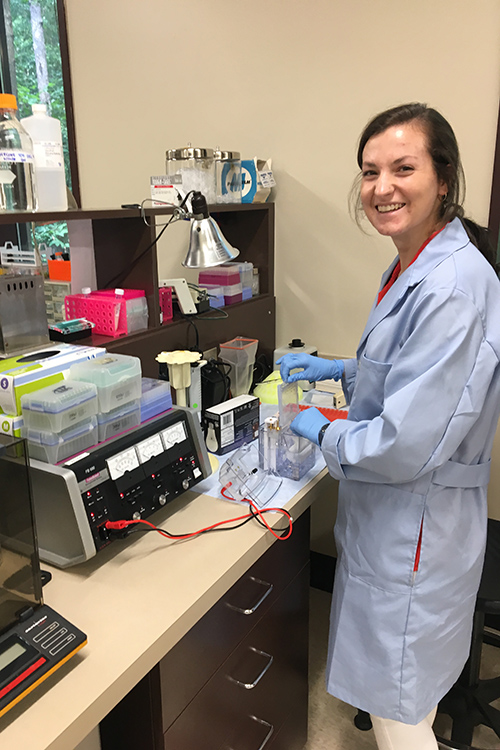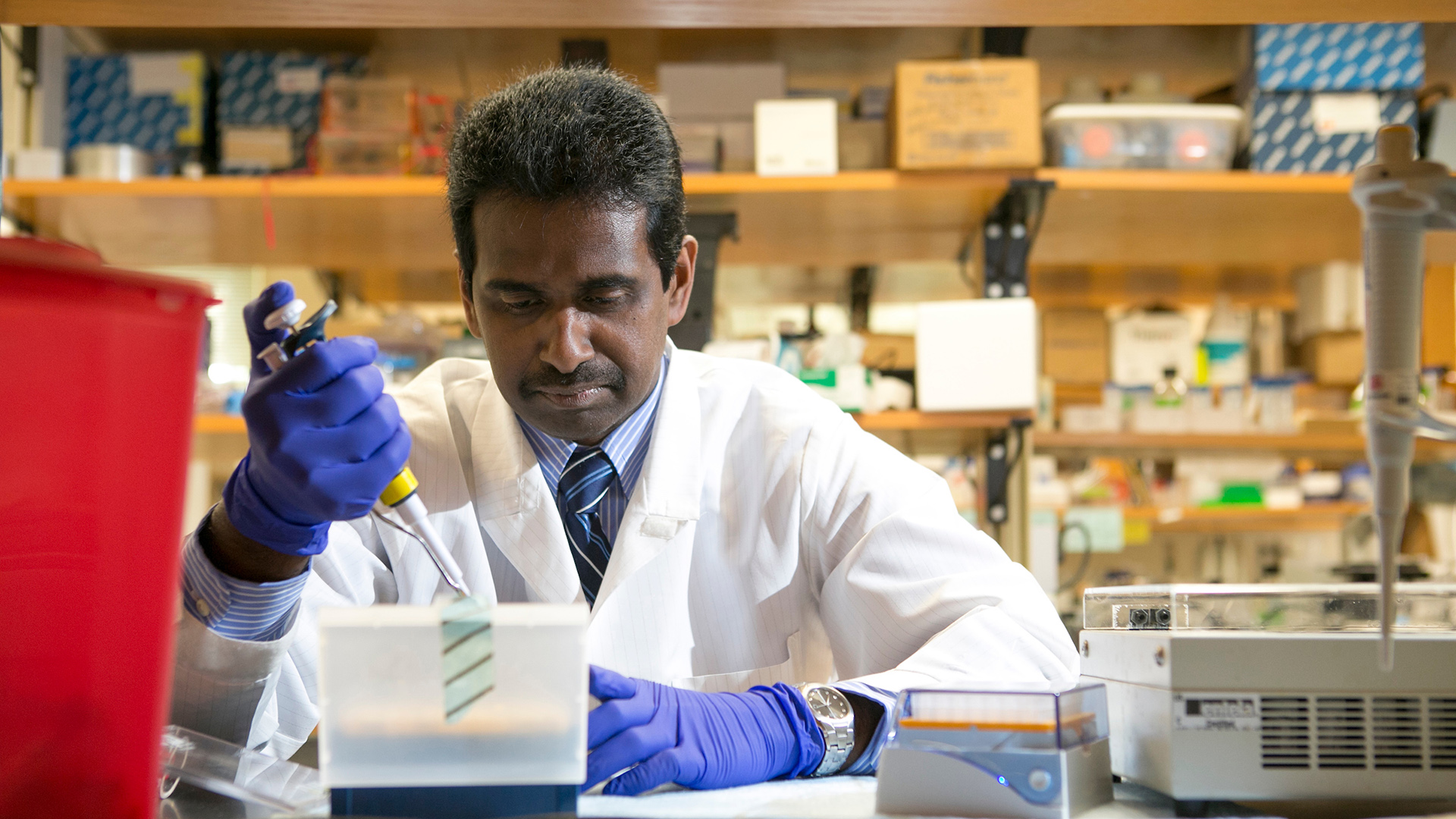Suresh Mathews, professor and chair of Samford University’s Department of Nutrition and Dietetics was recently published in the American Journal of Physiology: Endocrinology and Metabolism for his contributions to research that identified and defined the function of fetuin-A, an inhibitor of insulin action, in the body’s blood stream.
This work is meaningful in the field of diabetes research for prior to this project, little was known about the molecular on/off switch for this protein and its effects in the body—except for its association to insulin resistance. As one of the 16 co-authors of the final paper, Mathews and the team not only discovered the protein’s purpose, but also the impact body weight and fatness can play in regulating it.
“The fetuin-A protein is like a brake, or a stopping mechanism. The physiological function of this protein is to regulate insulin action, so it’s important that you can control it,” Mathews said. “In people who have elevated levels of the protein and its phosphorylated form, this brake is turned on more than it needs to be turned off.”
While this discovery is a point of pride for Mathews and his collaborators, there is another reason why this project is important to him—for among the 16 co-authors is a Samford University nutrition and dietetics alumna.
 Callie Nickles ‘18 transferred to Samford and began the nutrition and dietetics curriculum right away. She was determined to graduate with her peers, so she worked diligently to stay on pace with her course work. When it came to her senior research project, Mathews offered Nickles the opportunity to collaborate with him.
Callie Nickles ‘18 transferred to Samford and began the nutrition and dietetics curriculum right away. She was determined to graduate with her peers, so she worked diligently to stay on pace with her course work. When it came to her senior research project, Mathews offered Nickles the opportunity to collaborate with him.
At first, Nickles assisted Mathews with his research relating to basil—a project that is funded by the USDA National Institute of Food and Agriculture—but when she decided to continue her work in the lab over the summer, Nickles was able to support Mathew’s research on fetuin-A.
After showing proof of concept in animal models, the research progressed to studying the protein in human models—comparing blood levels of the protein in normal weight individuals and overweight individuals. Nickles played a vital role in assaying this protein for analysis.
“I told Callie, by engaging in research, she will learn to appreciate the whole process. It’s a collaborative effort, so even if the efforts feel small, they make important contribution to our body of knowledge,” Mathews said.
And this statement proved true for Nickles. “For me, the research experience was instrumental in my development as a student, and in my ability to make connections between what we were talking about in the class—as far as chemistry and the biological side of nutrition—to applications in real life,” she said. “It gave me the opportunity to see both sides of nutrition—from the point of view of a researcher and a dietitian.”
The experience also created a mentoring relationship between Mathews and Nickles. “The best part of the whole experience was being able to collaborate with a faculty member. In the midst of talking about research, Dr. Mathews also gave me advice and guidance, especially as I considered graduate school.”
Today, Nickles is completing her dietetic internship and Master of Public Health at the University of North Carolina at Chapel Hill. “Samford has prepared me in so many ways,” she said. “One of Samford’s greatest strengths is the small class size. I was able to build close relationships with so many of my professors. As a student, there was a lot expected of me, but it was this challenge that I think helped me succeed.”

